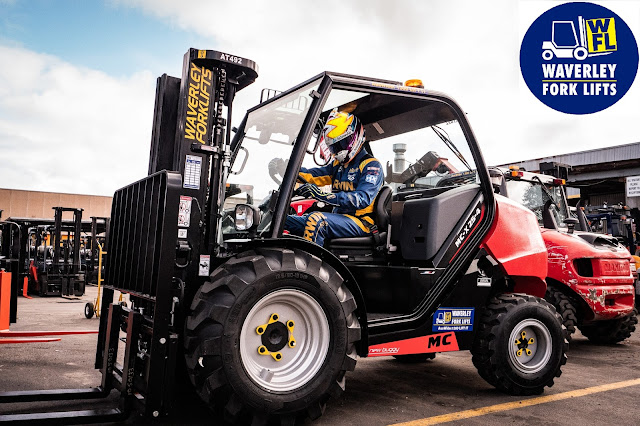A Friendly Guide to Forklifts: Everything You Need to Know
Forklifts are an integral part of various industries, playing a crucial role in material handling and transportation. Whether you work in a warehouse, construction site, or manufacturing plant, understanding forklifts Perth and their functionalities is essential for both operators and those working around them. In this blog, we aim to provide a friendly guide to understanding forklifts, from their basic functions to safety guidelines. So, buckle up and let's dive into the world of forklifts.
I. What is a Forklift?
Forklifts, commonly known as lift trucks, are powerful industrial vehicles designed to lift, carry, and transport heavy materials and goods. They have a unique design with a rear-wheel drive and a hydraulic lifting system attached to the front. Forklifts come in various types, each designed to cater to specific industry needs. The most common types include counterbalance forklifts, reach trucks, pallet jacks, and order pickers.
II. How do Forklifts Work?
Understanding the key components and features of a forklift is crucial to comprehend how they operate. The main components of a forklift include the frame, mast, carriage, forks, and the power source. The lifting mechanism relies on hydraulic cylinders that raise and lower the forks, allowing for efficient load handling. Safety features such as seatbelts, overhead guards, and operator compartments ensure the well-being of both the operator and those working nearby. It is important to note that operating a forklift requires proper training and certification to ensure safe and efficient use.
III. Different Applications of Forklifts:
Forklifts find their applications in a wide range of industries. In warehouses, forklifts or telehandler for hire are used for loading and unloading goods from trucks, organising inventory, and stacking pallets. Construction sites utilise forklifts to transport heavy materials such as steel beams, bricks, and concrete blocks. Manufacturing plants rely on forklifts to move raw materials, machinery, and finished products. Forklifts also play a vital role in the transportation and logistics industry, facilitating the movement of goods from one location to another.
IV. Types of Forklift Attachments:
To enhance the versatility and functionality of forklifts, various attachments can be added to suit specific tasks. These attachments include clamps, side shifters, fork positioners, and rotators. Clamps are used to handle materials that cannot be supported by forks alone, such as barrels, drums, and rolls. Side shifters allow the operator to move the forks left or right without repositioning the entire vehicle. Fork positioners enable the adjustment of fork width, making it easier to handle different pallet sizes. Rotators are used to rotate loads, making them ideal for applications such as stacking or dumping materials.
V. Forklift Maintenance:
Regular maintenance is crucial to ensure the optimal performance and longevity of a forklift. Operators should follow a routine maintenance schedule, including checking fluid levels, inspecting tires, and cleaning the vehicle. Battery-powered forklifts require proper charging and maintenance of the battery to avoid downtime. In case of any issues, it is important to consult the manufacturer's manual or seek professional assistance. Common troubleshooting issues include engine problems, hydraulic leaks, and electrical malfunctions. It is always better to address these issues promptly to avoid any potential safety hazards.
VI. Safety Guidelines:
Operating a forklift comes with its own set of risks, which is why safety should always be the top priority. Adhering to safety protocols not only protects the operator but also ensures the safety of those working in close proximity. Pre-operational checks should be performed, including inspecting brakes, steering, lights, and horn. Proper load handling techniques, such as centering the load and tilting the mast back, should be followed to maintain stability. Operators should be aware of their surroundings, ensuring clear visibility and taking caution when operating in busy environments. It is also important to consider factors such as load capacity, speed limits, and proper use of seatbelts.
Conclusion:
Forklifts are a critical component in many industries, enabling efficient material handling and transportation. Understanding the basics of forklifts, including their working mechanism, different applications, and safety guidelines, is essential for operators and those working around them.
By following proper maintenance routines and prioritising safety, forklifts Perth can be utilized effectively, improving productivity and minimising risks. So, remember to always prioritize safety when working with or around forklifts, ensuring a smooth and secure working environment for everyone involved. Stay safe and keep lifting!




This comment has been removed by the author.
ReplyDeleteThank you for this comprehensive guide to forklifts! It's great to see such detailed information about their functions, applications, and safety guidelines. The insights on different types of forklifts and their attachments add depth to understanding their versatility. I would love to learn more about specific forklift models and innovations in the industry, especially focusing on advancements like the Side Loader Forklift. Do you have any upcoming articles or insights on these specialized forklifts? Keep up the excellent work!
ReplyDelete